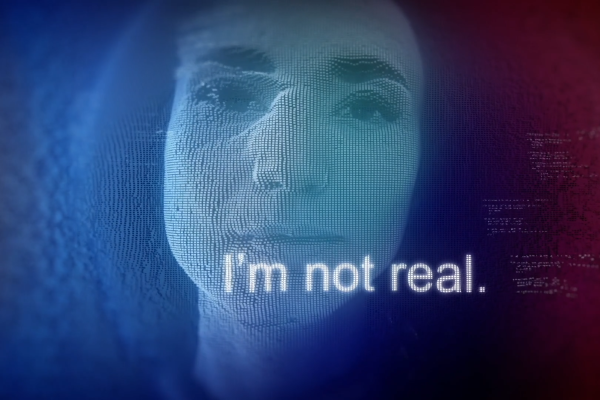Synthetic Voice Startup Sonantic Demonstrates Flirtatious AI for Valentine’s Day
Synthetic voice and video developer Sonantic has published a video of a flirtatious AI for Valentine’s Day called “What’s Her Secret?” The video demonstrates how AI can express subtle emotions with the right voice models, like those created by Sonantic, best known for working with Val Kilmer to create a synthetic version of his voice.
Flirty AI
The video showcases a monologue about love in the form of a voiceover seemingly recorded by the woman in view during the video. Near the end, the video reveals that, while the woman on the screen is human, the voice throughout has been an AI narrator. Timed to Valentine’s Day, the video is obviously about showing off how realistic AI can be in imitating humans in audio form. “What’s Her Secret?” was released by Sonantic to unveil its new work around the “subtle emotions and non-speech sounds” that make human speech more nuanced than a robotic recitation. The new models widen the emotional range of Sonantic’s AI beyond happy and sad to styles like coy, teasing, and flirty, as seen in the highlighted software during the video. To further improve the realism, non-verbal sounds like laughter, breathing, crying, and scoffing can be incorporated into the AI-powered audio.
“Human beings are incredibly complex by nature and our voices play a critical role in helping us connect with the world around us. At Sonantic, we are committed to capturing the nuances of the human voice, and we’re incredibly proud of these technological breakthroughs that we have brought to life through ‘What’s Her Secret?,'” Sonantic CEO Zeena Qureshi explained in a statement “From flirting and giggling to breathing and pausing, this is the most realistic romantic demo we’ve created to date, helping us inch closer to our vision of being the CGI of Audio.”
Subtle Realism
Sonantic’s synthetic text-to-speech voice engine has largely been used for video games but has been moving into films lately. The dashboard editor enables users to easily change speech inflection, speed, volume, and style. Shouting and crying are already a part of the options list. The success of the voice clones garnered the London-based startup an approximately $2.6 million seed funding round two years ago. The Kilmer voice replication and other work have led to more success for Sonantic as synthetic media becomes more popular and widely used.
Kilmer is far from the only synthetic actor appearing on screens over the last several months. A virtual version of young Luke Skywalker appeared on The Mandalorian TV show thanks to the firm Respeecher. And Metaphysic, the startup behind a synthetic Tom Cruise, has recently raised $7.5 million. Plus, the voice and visuals can be connected with conversational AI engineers, producing an entirely synthetic William Shatner and Albert Einstein able to converse with people online. The kind of subtle emotions embodied by Sonantic’s video could also be useful in the burgeoning world of virtual beings. The Cecilia virtual bartender now operating at Florida International University might benefit from seeming more sympathetic or flirty, while anything that makes virtual brand assistants seem more human and sympathetic will likely aid in improving customer experiences.
Follow @voicebotai Follow @erichschwartz
Virtual Bartender Joins Florida International University as Teacher’s Aide
Vocinity and Synthesia Debut Custom Virtual Being Brand Assistants









